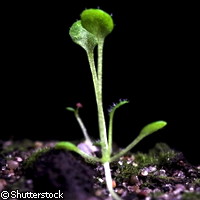Study sheds light on plants' nutrient sensing mechanisms
An international team of scientists has unravelled the mechanisms by which plants modify their root structure to maximise access to nutrients in the soil. The study, published in the journal Developmental Cell, was partly supported by the EU. Author Eva Benkova of the Flanders Institute for Biotechnology (VIB) in Belgium received a EUR 1.3 million starting grant from the European Research Council (ERC) for her HCPO ('Hormonal cross-talk in plant organogenesis') project. Plants get most of their nitrogen in the form of nitrate from the soil. However, levels of nitrate in the soil vary widely, so when the plant's roots encounter a nitrate-rich patch of soil, the plant triggers the formation of lateral roots. In this way, plants ensure that their root systems are densest in the most nutrient-rich zones of the soil. As well as providing plants with nitrogen for nutritional purposes, nitrate acts as an important signalling molecule in the plant, playing an important role in plant metabolism and growth. Moreover, nitrate signalling is particularly crucial in the development of lateral roots. Previous research has demonstrated that a transporter protein called NRT1.1 is responsible for taking up nitrate from the soil and also contributes to sensing nitrate and nitrate signalling. In this study, led by Dr Alain Gojon of the Plant Biochemistry and Molecular Physiology Department in Montpellier, France, the researchers set out to investigate the role of NRT1.1 in lateral root growth in Arabidopsis thaliana, or mouse ear cress. To their surprise, the team uncovered a connection between NRT1.1 and the major plant hormone auxin which, among other things, is heavily involved in root development. The research revealed that in addition to transporting nitrate, NRT1.1 also facilitates auxin transport. When nitrate concentrations are low, NRT1.1 halts the accumulation of auxin in the lateral root tip. 'This in turn represses [lateral root] growth,' the researchers explain. In contrast, when nitrate levels are high, NRT1.1 allows auxin to accumulate in the lateral root tips, thereby stimulating lateral root growth. These results illustrate how nitrate levels influence the accumulation of auxin in lateral roots. 'We propose that NRT1.1 represses lateral root growth at low nitrate availability by promoting auxin transport out of lateral root tips and towards the base of the root. Thus, high nitrate availability stimulates lateral root growth by inhibiting NRT1.1-dependent auxin transport and allowing auxin accumulation in root tips,' concluded Dr. Gojon. 'This defines a mechanism connecting nutrient and hormone signalling during organ development.' In addition to researchers in Montpellier and the VIB, the study involved scientists from the Institute of Experimental Botany at the Academy of Sciences of the Czech Republic and the Umeå Plant Science Centre at the Swedish University of Agricultural Sciences.
Countries
Belgium, Czechia, France, Sweden



